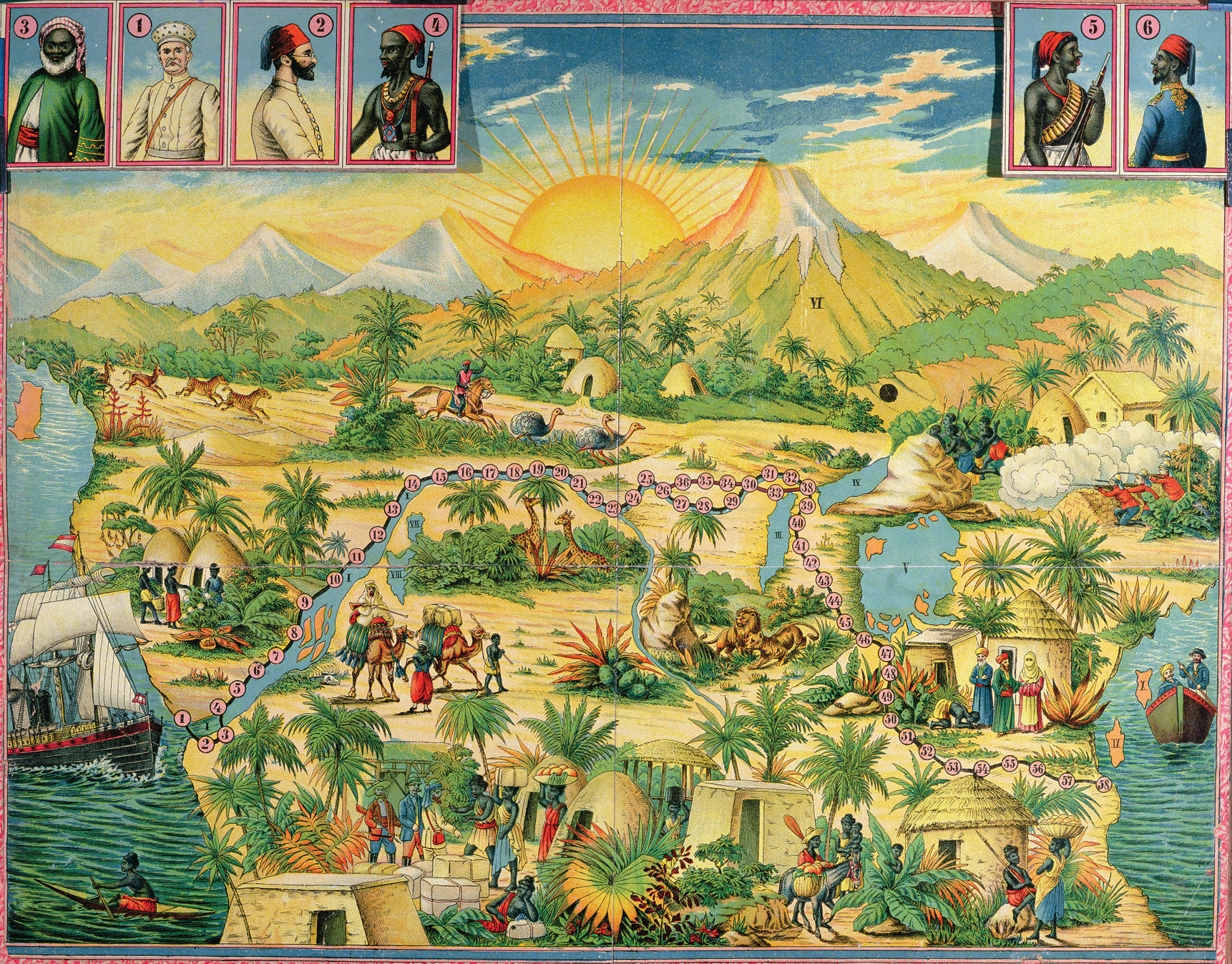Visual Source 18.1
Prelude to the Scramble
As the Atlantic slave trade diminished over the course of the nineteenth century, Europeans began to look at Africa in new ways—as a source of raw materials, as an opportunity for investment, as a market for industrial products, as a field for exploration, and as an opportunity to spread Christianity. But it was not until the last quarter of the nineteenth century that Europeans showed much interest in actually acquiring territory and ruling large populations in Africa. Visual Source 18.1, from a late-nineteenth-century French board game, illustrates the widespread interest in the growing missionary enterprise in Africa as well as in the celebrated adventures of the intrepid explorers who penetrated the dangerous interior of the continent. It enabled ordinary Europeans to participate in exciting events in distant lands. This game featured the travels of David Livingstone and Henry Stanley. Livingstone (1813–1873) was a British missionary and explorer of central Africa whose work in exposing the horrors of the Arab slave trade gave him an almost mythic status among Europeans. Stanley (1841–1904), a British journalist and explorer, gained lasting fame by finding Livingstone, long out of touch with his homeland, deep in the African interior.

Question
What images of Africa are suggested by this board game? Notice carefully the landscape, the animals, and the activities in which people are engaged.
Question
How does the game depict European activities in Africa?
Question
What might be the meaning of the large sun arising at the top of the image?
Question
What nineteenth-century realities are missing from this portrayal of Africa?